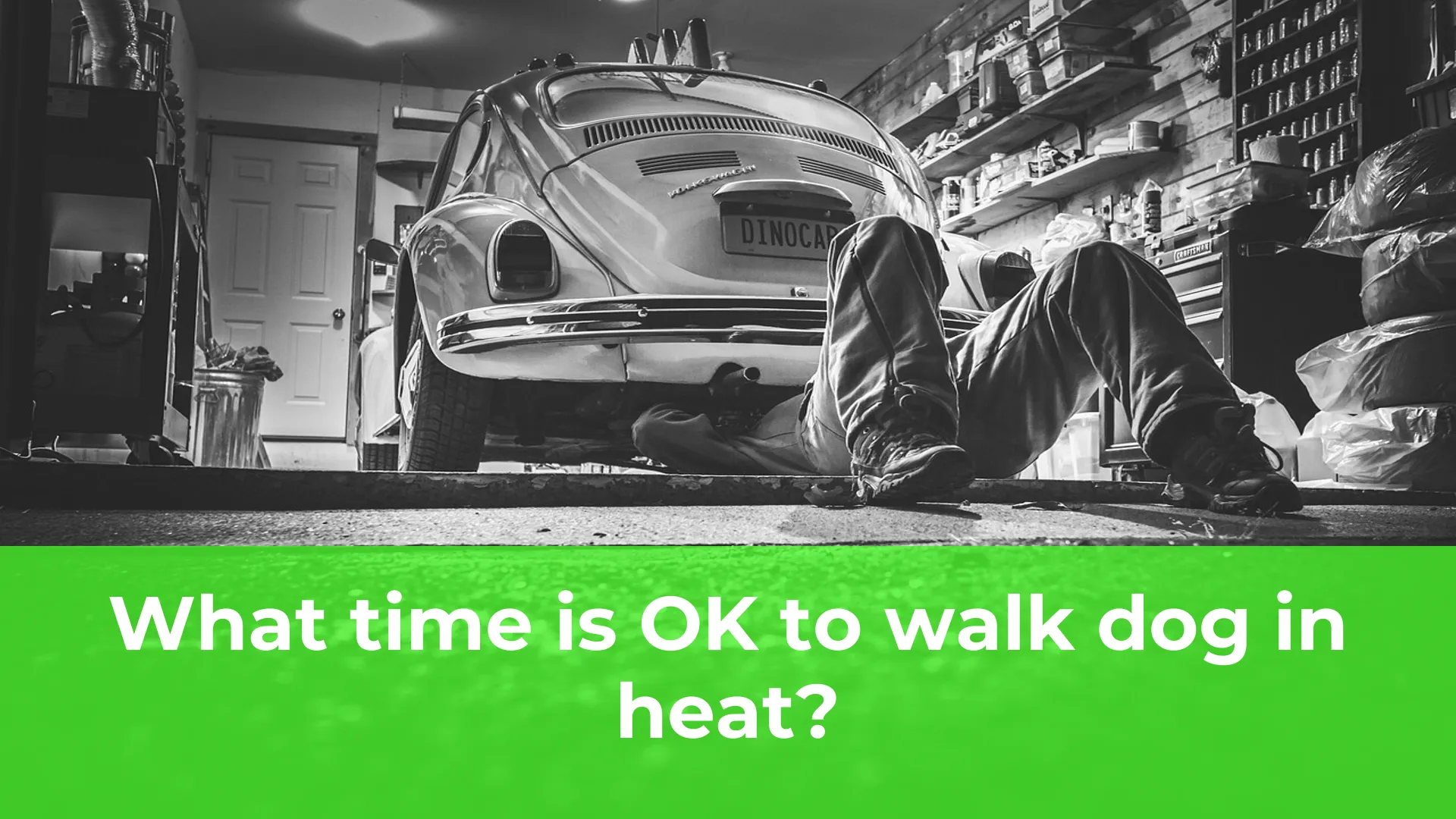What time is OK to walk dog in heat?
Choosing the right time to walk your dog in the heat is crucial to ensure their comfort and safety. With temperatures soaring, it’s important to avoid the hottest parts of the day to prevent your furry friend from overheating. Early mornings and late evenings are generally the best times to take your dog for a walk during hot weather. During these cooler times of day, the pavement is less likely to be scorching, reducing the risk of burns to your dog’s paw pads. Additionally, there is often more shade available and a lower chance of encountering hot surfaces. It is essential to prioritize your dog’s well-being by scheduling their walks appropriately during the heat.
The importance of walking your dog in the heat
As the temperatures rise during the summer months, it is crucial to recognize the significance of walking your dog in the heat. Dogs, like humans, can become vulnerable to heat exhaustion and dehydration, making it essential to take extra precautions when exercising them outdoors. Regular walks not only provide physical exercise but also contribute to the mental well-being of your furry friend. However, it is crucial to adjust your walking routine to ensure your dog’s safety and prevent any heat-related health issues.
Walking your dog during cooler times of the day, such as early morning or late evening, can help minimize their exposure to extreme heat. Asphalt and concrete can become scorching hot under the sun, which can burn your dog’s paw pads. Opting for shaded routes or walking on grassy areas can provide relief from the heat. Additionally, always carry water for both you and your dog to stay hydrated during the walk. Pay attention to signs of overheating, such as excessive panting, drooling, or reluctance to continue walking. By taking these necessary precautions, you can ensure that your dog stays healthy and happy during summer walks.
Understanding the risks of walking your dog in extreme temperatures
As a responsible pet owner, it is crucial to understand the potential risks associated with walking your dog in extreme temperatures. Whether it’s scorching hot or freezing cold outside, your furry companion’s well-being should always be a top priority. In extreme heat, dogs can suffer from heatstroke, paw pad burns, and dehydration, while severe cold weather can lead to frostbite and hypothermia. Therefore, it’s important to take necessary precautions, such as adjusting walking times, providing adequate hydration, and considering protective gear, to ensure your dog stays safe and healthy during daily walks.
Tips for choosing the right time to walk your dog in the heat
When the temperatures rise, it’s crucial to choose the right time to walk your dog to protect their well-being. Dogs are prone to heat exhaustion and heatstroke, especially in the scorching summer months. To keep your furry friend safe and comfortable, consider these essential tips for selecting the optimal time for your daily walks. By being mindful of the heat and making thoughtful choices, you can ensure your dog stays happy and healthy during even the hottest days.
How to recognize signs of heatstroke in dogs during walks
Summer is in full swing, and while it’s the perfect time to enjoy outdoor activities with your furry friend, it’s crucial to stay vigilant about their health. Heatstroke can pose a serious threat to dogs during walks, especially in hot and humid conditions. Recognizing the signs of heatstroke is essential to ensure the well-being of your four-legged companion. This article will guide you through the key indicators to look out for and provide practical tips on how to prevent heatstroke during walks.
One of the primary signs of heatstroke in dogs is excessive panting and drooling. If your dog is panting heavily and their saliva seems thicker and more abundant than usual, it may indicate that they are struggling to cool down. Additionally, watch out for increased heart rate and difficulty breathing. Heatstroke can cause rapid breathing and a racing pulse as your dog’s body attempts to regulate its temperature. Another concerning symptom is lethargy or weakness. If your normally energetic pup seems unusually tired or seems to be struggling to keep up during walks, it could be a sign of heat exhaustion. By recognizing these signs, you can take immediate action to prevent your dog’s condition from worsening.
Why early morning walks are ideal for dogs in hot weather
As temperatures rise during the summer months, it is crucial for dog owners to prioritize their pets’ well-being and ensure they stay cool and comfortable. One way to achieve this is by taking your dog for early morning walks. The cooler temperatures during this time of day are not only more comfortable for your furry friend, but they also reduce the risk of overheating and paw pad burns from hot pavement.
Early morning walks provide a refreshing start to the day for both you and your dog. The calmness of the morning, before the hustle and bustle of daily life begins, allows for a peaceful and enjoyable walk. Your dog will appreciate the opportunity to explore and exercise while the world is still waking up. Additionally, the morning air is often cleaner, providing a healthier environment for your pet to breathe in.
Another advantage of early morning walks is the reduced likelihood of encountering other dogs and distractions. Fewer people and animals on the streets mean less stress and potential dangers for your dog. This is particularly important for reactive or anxious dogs who may find crowded areas overwhelming. By choosing the early morning hours, you can ensure a more relaxed and focused walk for both you and your canine companion.




